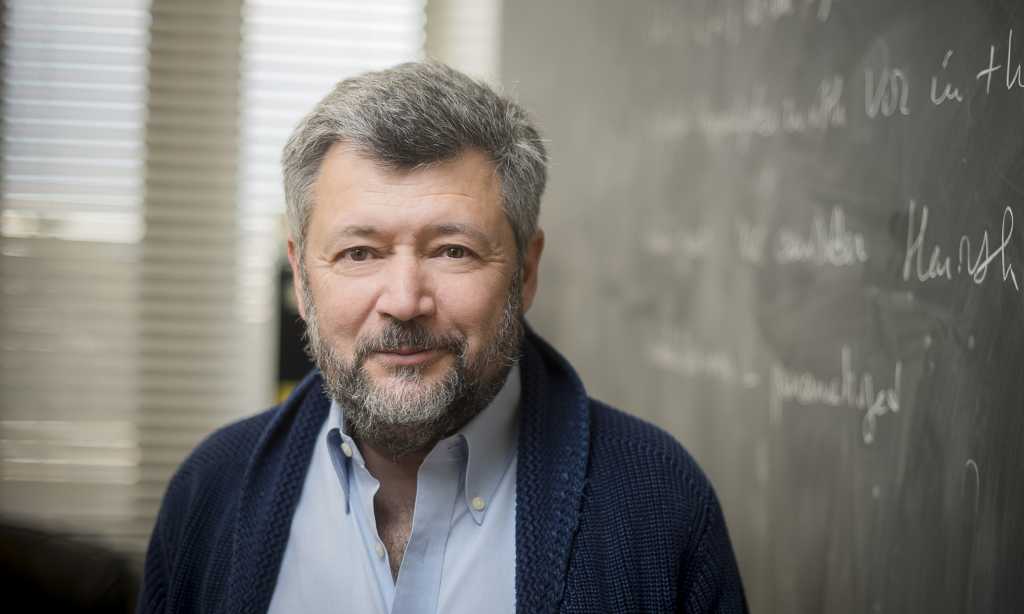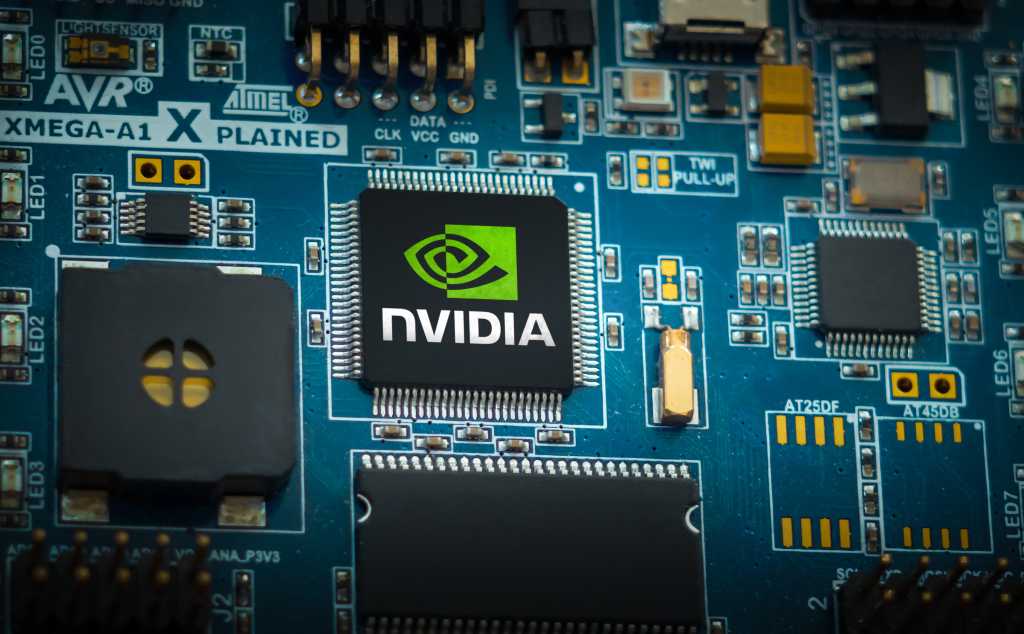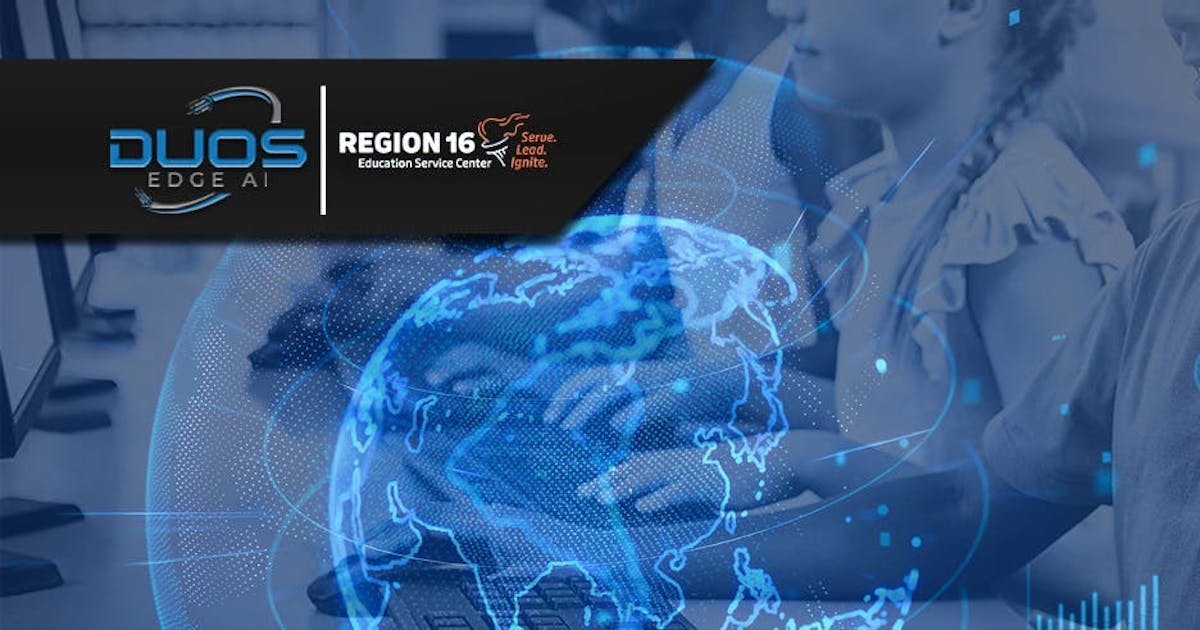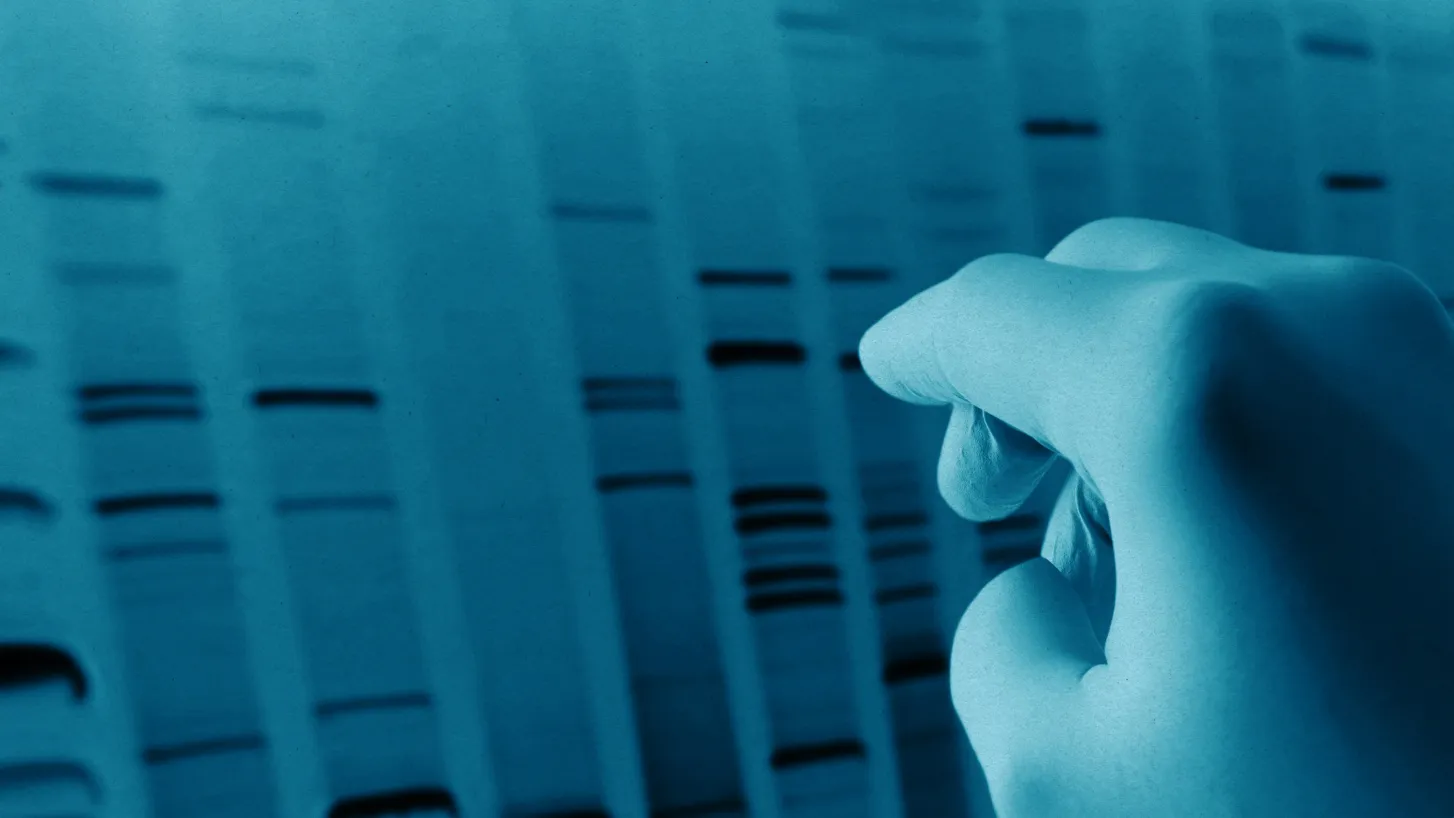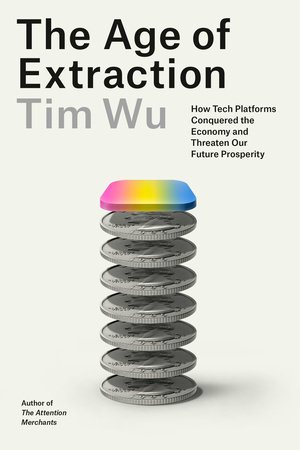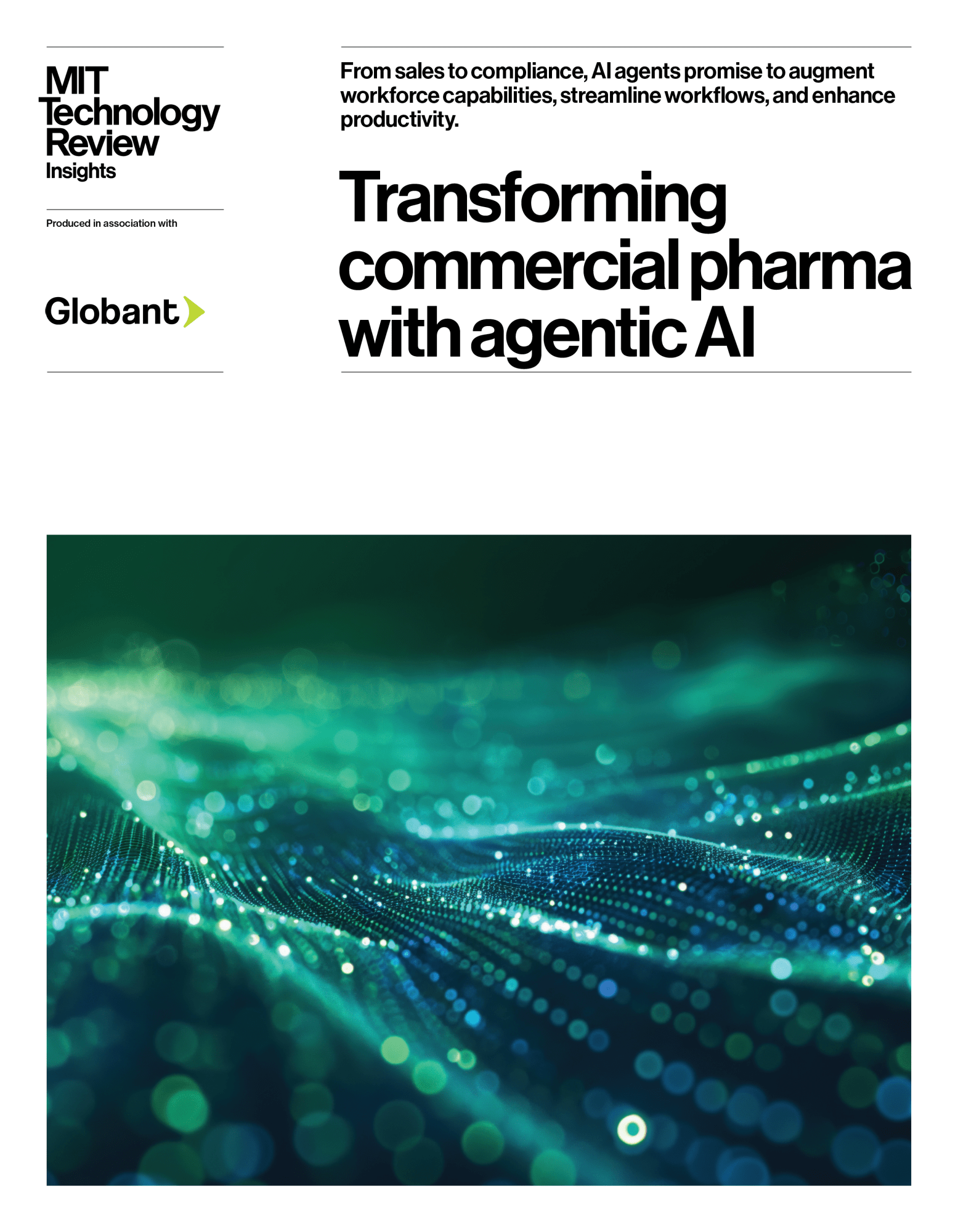Be honest: Have you ever looked up someone from your childhood on social media with the sole intention of seeing how they’ve aged?
One of my colleagues, who shall remain nameless, certainly has. He recently shared a photo of a former classmate. “Can you believe we’re the same age?” he asked, with a hint of glee in his voice. A relative also delights in this pastime. “Wow, she looks like an old woman,” she’ll say when looking at a picture of someone she has known since childhood. The years certainly are kinder to some of us than others.
But wrinkles and gray hairs aside, it can be difficult to know how well—or poorly—someone’s body is truly aging, under the hood. A person who develops age-related diseases earlier in life, or has other biological changes associated with aging (such as elevated cholesterol or markers of inflammation), might be considered “biologically older” than a similar-age person who doesn’t have those changes. Some 80-year-olds will be weak and frail, while others are fit and active.
Doctors have long used functional tests that measure their patients’ strength or the distance they can walk, for example, or simply “eyeball” them to guess whether they look fit enough to survive some treatment regimen, says Tamir Chandra, who studies aging at the Mayo Clinic.
But over the past decade, scientists have been uncovering new methods of looking at the hidden ways our bodies are aging. What they’ve found is changing our understanding of aging itself.
“Aging clocks” are new scientific tools that can measure how our organs are wearing out, giving us insight into our mortality and health. They hint at our biological age. While chronological age is simply how many birthdays we’ve had, biological age is meant to reflect something deeper. It measures how our bodies are handling the passing of time and—perhaps—lets us know how much more of it we have left. And while you can’t change your chronological age, you just might be able to influence your biological age.
It’s not just scientists who are using these clocks. Longevity influencers like Bryan Johnson often use them to make the case that they are aging backwards. “My telomeres say I’m 10 years old,” Johnson posted on X in April. The Kardashians have tried them too (Khloé was told on TV that her biological age was 12 years below her chronological age). Even my local health-food store offers biological age testing. Some are pushing the use of clocks even further, using them to sell unproven “anti-aging” supplements.
The science is still new, and few experts in the field—some of whom affectionately refer to it as “clock world”—would argue that an aging clock can definitively reveal an individual’s biological age.
But their work is revealing that aging clocks can offer so much more than an insta-brag, a snake-oil pitch—or even just an eye-catching number. In fact, they are helping scientists unravel some of the deepest mysteries in biology: Why do we age? How do we age? When does aging begin? What does it even mean to age?
Ultimately, and most importantly, they might soon tell us whether we can reverse the whole process.
Clocks kick off
The way your genes work can change. Molecules called methyl groups can attach to DNA, controlling the way genes make proteins. This process is called methylation, and it can potentially occur at millions of points along the genome. These epigenetic markers, as they are known, can switch genes on or off, or increase or decrease how much protein they make. They’re not part of our DNA, but they influence how it works.
In 2011, Steve Horvath, then a biostatistician at the University of California, Los Angeles, took part in a study that was looking for links between sexual orientation and these epigenetic markers. Steve is straight; he says his twin brother, Markus, who also volunteered, is gay.
That study didn’t find a link between DNA methylation and sexual orientation. But when Horvath looked at the data, he noticed a different trend—a very strong link between age and methylation at around 88 points on the genome. He once told me he fell off his chair when he saw it.
Many of the affected genes had already been linked to age-related brain and cardiovascular diseases, but it wasn’t clear how methylation might be related to those diseases.
If a model could work out what average aging looks like, it could potentially estimate whether someone was aging unusually fast or slowly. It could transform medicine and fast-track the search for an anti-aging drug. It could help us understand what aging is, and why it happens at all.
In 2013, Horvath collected methylation data from 8,000 tissue and cell samples to create what he called the Horvath clock—essentially a mathematical model that could estimate age on the basis of DNA methylation at 353 points on the genome. From a tissue sample, it was able to detect a person’s age within a range of 2.9 years.
That clock changed everything. Its publication in 2013 marked the birth of “clock world.” To some, the possibilities were almost endless. If a model could work out what average aging looks like, it could potentially estimate whether someone was aging unusually fast or slowly. It could transform medicine and fast-track the search for an anti-aging drug. It could help us understand what aging is, and why it happens at all.
The epigenetic clock was a success story in “a field that, frankly, doesn’t have a lot of success stories,” says João Pedro de Magalhães, who researches aging at the University of Birmingham, UK.
It took a few years, but as more aging researchers heard about the clock, they began incorporating it into their research and even developing their own clocks. Horvath became a bit of a celebrity. Scientists started asking for selfies with him at conferences, he says. Some researchers even made T-shirts bearing the front page of his 2013 paper.
Some of the many other aging clocks developed since have become notable in their own right. Examples include the PhenoAge clock, which incorporates health data such as blood cell counts and signs of inflammation along with methylation, and the Dunedin Pace of Aging clock, which tells you how quickly or slowly a person is aging rather than pointing to a specific age. Many of the clocks measure methylation, but some look at other variables, such as proteins in blood or certain carbohydrate molecules that attach to such proteins.
Today, there are hundreds or even thousands of clocks out there, says Chiara Herzog, who researches aging at King’s College London and is a member of the Biomarkers of Aging Consortium. Everyone has a favorite. Horvath himself favors his GrimAge clock, which was named after the Grim Reaper because it is designed to predict time to death.
That clock was trained on data collected from people who were monitored for decades, many of whom died in that period. Horvath won’t use it to tell people when they might die of old age, he stresses, saying that it wouldn’t be ethical. Instead, it can be used to deliver a biological age that hints at how long a person might expect to live. Someone who is 50 but has a GrimAge of 60 can assume that, compared with the average 50-year-old, they might be a bit closer to the end.
GrimAge is not perfect. While it can strongly predict time to death given the health trajectory someone is on, no aging clock can predict if someone will start smoking or get a divorce (which generally speeds aging) or suddenly take up running (which can generally slow it). “People are complicated,” Horvath tells MIT Technology Review. “There’s a huge error bar.”
On the whole, the clocks are pretty good at making predictions about health and lifespan. They’ve been able to predict that people over the age of 105 have lower biological ages, which tracks given how rare it is for people to make it past that age. A higher epigenetic age has been linked to declining cognitive function and signs of Alzheimer’s disease, while better physical and cognitive fitness has been linked to a lower epigenetic age.
Black-box clocks
But accuracy is a challenge for all aging clocks. Part of the problem lies in how they were designed. Most of the clocks were trained to link age with methylation. The best clocks will deliver an estimate that reflects how far a person’s biology deviates from the average. Aging clocks are still judged on how well they can predict a person’s chronological age, but you don’t want them to be too close, says Lucas Paulo de Lima Camillo, head of machine learning at Shift Bioscience, who was awarded $10,000 by the Biomarkers of Aging Consortium for developing a clock that could estimate age within a range of 2.55 years.

“There’s this paradox,” says Camillo. If a clock is really good at predicting chronological age, that’s all it will tell you—and it probably won’t reveal much about your biological age. No one needs an aging clock to tell them how many birthdays they’ve had. Camillo says he’s noticed that when the clocks get too close to “perfect” age prediction, they actually become less accurate at predicting mortality.
Therein lies the other central issue for scientists who develop and use aging clocks: What is the thing they are really measuring? It is a difficult question for a field whose members notoriously fail to agree on the basics. (Everything from the definition of aging to how it occurs and why is up for debate among the experts.)
They do agree that aging is incredibly complex. A methylation-based aging clock might tell you about how that collection of chemical markers compares across individuals, but at best, it’s only giving you an idea of their “epigenetic age,” says Chandra. There are probably plenty of other biological markers that might reveal other aspects of aging, he says: “None of the clocks measure everything.”
We don’t know why some methyl groups appear or disappear with age, either. Are these changes causing damage? Or are they a by-product of it? Are the epigenetic patterns seen in a 90-year-old a sign of deterioration? Or have they been responsible for keeping that person alive into very old age?
To make matters even more complicated, two different clocks can give similar answers by measuring methylation at entirely different regions of the genome. No one knows why, or which regions might be the best ones to focus on.
“The biomarkers have this black-box quality,” says Jesse Poganik at Brigham and Women’s Hospital in Boston. “Some of them are probably causal, some of them may be adaptive … and some of them may just be neutral”: either “there’s no reason for them not to happen” or “they just happen by random chance.”
What we know is that, as things stand, none of the clocks are precise enough to predict the biological age of a single person (sorry, Khloé). Putting the same biological sample through five different clocks will give you five wildly different results.
Even the same clock can give you different answers if you put a sample through it more than once. “They’re not yet individually predictive,” says Herzog. “We don’t know what [a clock result] means for a person, [or if] they’re more or less likely to develop disease.”
And it’s why plenty of aging researchers—even those who regularly use the clocks in their work—haven’t bothered to measure their own epigenetic age. “Let’s say I do a clock and it says that my biological age … is five years older than it should be,” says Magalhães. “So what?” He shrugs. “I don’t see much point in it.”
You might think this lack of clarity would make aging clocks pretty useless in a clinical setting. But plenty of clinics are offering them anyway. Some longevity clinics are more careful, and will regularly test their patients with a range of clocks, noting their results and tracking them over time. Others will simply offer an estimate of biological age as part of a longevity treatment package.
And then there are the people who use aging clocks to sell supplements. While no drug or supplement has been definitively shown to make people live longer, that hasn’t stopped the lightly regulated wellness industry from pushing a range of “treatments” that range from lotions to herbal pills all the way through to stem-cell injections.
Some of these people come to aging meetings. I was in the audience at an event when one CEO took to the stage to claim he had reversed his own biological age by 18 years—thanks to the supplement he was selling. Tom Weldon of Ponce de Leon Health told us his gray hair was turning brown. His biological age was supposedly reversing so rapidly that he had reached “longevity escape velocity.”
But if the people who buy his supplements expect some kind of Benjamin Button effect, they might be disappointed. His company hasn’t yet conducted a randomized controlled trial to demonstrate any anti-aging effects of that supplement, called Rejuvant. Weldon says that such a trial would take years and cost millions of dollars, and that he’d “have to increase the price of our product more than four times” to pay for one. (The company has so far tested the active ingredient in mice and carried out a provisional trial in people.)
More generally, Horvath says he “gets a bad taste in [his] mouth” when people use the clocks to sell products and “make a quick buck.” But he thinks that most of those sellers have genuine faith in both the clocks and their products. “People truly believe their own nonsense,” he says. “They are so passionate about what they discovered, they fall into this trap of believing [their] own prejudices.”
The accuracy of the clocks is at a level that makes them useful for research, but not for individual predictions. Even if a clock did tell someone they were five years younger than their chronological age, that wouldn’t necessarily mean the person could expect to live five years longer, says Magalhães. “The field of aging has long been a rich ground for snake-oil salesmen and hype,” he says. “It comes with the territory.” (Weldon, for his part, says Rejuvant is the only product that has “clinically meaningful” claims.)
In any case, Magalhães adds that he thinks any publicity is better than no publicity.
And there’s the rub. Most people in the longevity field seem to have mixed feelings about the trendiness of aging clocks and how they are being used. They’ll agree that the clocks aren’t ready for consumer prime time, but they tend to appreciate the attention. Longevity research is expensive, after all. With a surge in funding and an explosion in the number of biotech companies working on longevity, aging scientists are hopeful that innovation and progress will follow.
So they want to be sure that the reputation of aging clocks doesn’t end up being tarnished by association. Because while influencers and supplement sellers are using their “biological ages” to garner attention, scientists are now using these clocks to make some remarkable discoveries. Discoveries that are changing the way we think about aging.
How to be young again
Two little mice lie side by side, anesthetized and unconscious, as Jim White prepares his scalpel. The animals are of the same breed but look decidedly different. One is a youthful three-month-old, its fur thick, black, and glossy. By comparison, the second mouse, a 20-month-old, looks a little the worse for wear. Its fur is graying and patchy. Its whiskers are short, and it generally looks kind of frail.
But the two mice are about to have a lot more in common. White, with some help from a colleague, makes incisions along the side of each mouse’s body and into the upper part of an arm and leg on the same side. He then carefully stitches the two animals together—membranes, fascia, and skin.
The procedure takes around an hour, and the mice are then roused from their anesthesia. At first, the two still-groggy animals pull away from each other. But within a few days, they seem to have accepted that they now share their bodies. Soon their circulatory systems will fuse, and the animals will share a blood flow too.

White, who studies aging at Duke University, has been stitching mice together for years; he has performed this strange procedure, known as heterochronic parabiosis, more than a hundred times. And he’s seen a curious phenomenon occur. The older mice appear to benefit from the arrangement. They seem to get younger.
Experiments with heterochronic parabiosis have been performed for decades, but typically scientists keep the mice attached to each other for only a few weeks, says White. In their experiment, he and his colleagues left the mice attached for three months—equivalent to around 10 human years. The team then carefully separated the animals to assess how each of them had fared. “You’d think that they’d want to separate immediately,” says White. “But when you detach them … they kind of follow each other around.”
The most striking result of that experiment was that the older mice who had been attached to a younger mouse ended up living longer than other mice of a similar age. “[They lived] around 10% longer, but [they] also maintained a lot of [their] function,” says White. They were more active and maintained their strength for longer, he adds.
When his colleagues, including Poganik, applied aging clocks to the mice, they found that their epigenetic ages were lower than expected. “The young circulation slowed aging in the old mice,” says White. The effect seemed to last, too—at least for a little while. “It preserved that youthful state for longer than we expected,” he says.
The young mice went the other way and appeared biologically older, both while they were attached to the old mice and shortly after they were detached. But in their case, the effect seemed to be short-lived, says White: “The young mice went back to being young again.”
To White, this suggests that something about the “youthful state” might be programmed in some way. That perhaps it is written into our DNA. Maybe we don’t have to go through the biological process of aging.
This gets at a central debate in the aging field: What is aging, and why does it happen? Some believe it’s simply a result of accumulated damage. Some believe that the aging process is programmed; just as we grow limbs, develop a brain, reach puberty, and experience menopause, we are destined to deteriorate. Others think programs that play an important role in our early development just turn out to be harmful later in life by chance. And there are some scientists who agree with all of the above.
White’s theory is that being old is just “a loss of youth,” he says. If that’s the case, there’s a silver lining: Knowing how youth is lost might point toward a way to somehow regain it, perhaps by restoring those youthful programs in some way.
Dogs and dolphins
Horvath’s eponymous clock was developed by measuring methylation in DNA samples taken from tissues around the body. It seems to represent aging in all these tissues, which is why Horvath calls it a pan-tissue clock. Given that our organs are thought to age differently, it was remarkable that a single clock could measure aging in so many of them.
But Horvath had ambitious plans for an even more universal clock: a pan-species model that could measure aging in all mammals. He started out, in 2017, with an email campaign that involved asking hundreds of scientists around the world to share samples of tissues from animals they had worked with. He tried zoos, too.
The pan-mammalian clock suggests that there is something universal about aging—not just that all mammals experience it in a similar way, but that a similar set of genetic or epigenetic factors might be responsible for it.
“I learned that people had spent careers collecting [animal] tissues,” he says. “They had freezers full of [them].” Amenable scientists would ship those frozen tissues, or just DNA, to Horvath’s lab in California, where he would use them to train a new model.
Horvath says he initially set out to profile 30 different species. But he ended up receiving around 15,000 samples from 200 scientists, representing 348 species—including everything from dogs to dolphins. Could a single clock really predict age in all of them?
“I truly felt it would fail,” says Horvath. “But it turned out that I was completely wrong.” He and his colleagues developed a clock that assessed methylation at 36,000 locations on the genome. The result, which was published in 2023 as the pan-mammalian clock, can estimate the age of any mammal and even the maximum lifespan of the species. The data set is open to anyone who wants to download it, he adds: “I hope people will mine the data to find the secret of how to extend a healthy lifespan.”
The pan-mammalian clock suggests that there is something universal about aging—not just that all mammals experience it in a similar way, but that a similar set of genetic or epigenetic factors might be responsible for it.
Comparisons between mammals also support the idea that the slower methylation changes occur, the longer the lifespan of the animal, says Nelly Olova, an epigeneticist who researches aging at the University of Edinburgh in the UK. “DNA methylation slowly erodes with age,” she says. “We still have the instructions in place, but they become a little messier.” The research in different mammals suggests that cells can take only so much change before they stop functioning.
“There’s a finite amount of change that the cell can tolerate,” she says. “If the instructions become too messy and noisy … it cannot support life.”
Olova has been investigating exactly when aging clocks first begin to tick—in other words, the point at which aging starts. Clocks can be trained on data from volunteers, and by matching the patterns of methylation on their DNA to their chronological age. The trained clocks are then typically used to estimate the biological age of adults. But they can also be used on samples from children. Or babies. They can be used to work out the biological age of cells that make up embryos.
In her research, Olova used adult skin cells, which—thanks to Nobel Prize–winning research in the 2000s—can be “reprogrammed” back to a state resembling that of the pluripotent stem cells found in embryos. When Olova and her colleagues used a “partial reprogramming” approach to take cells close to that state, they found that the closer they got to the entirely reprogrammed state, the “younger” the cells were.
It was around 20 days after the cells had been reprogrammed into stem cells that they reached the biological age of zero according to the clock used, says Olova. “It was a bit surreal,” she says. “The pluripotent cells measure as minus 0.5; they’re slightly below zero.”
Vadim Gladyshev, a prominent aging researcher at Harvard University, has since proposed that the same negative level of aging might apply to embryos. After all, some kind of rejuvenation happens during the early stages of embryo formation—an aged egg cell and an aged sperm cell somehow create a brand-new cell. The slate is wiped clean.
Gladyshev calls this point “ground zero.” He posits that it’s reached sometime during the “mid-embryonic state.” At this point, aging begins. And so does “organismal life,” he argues. “It’s interesting how this coincides with philosophical questions about when life starts,” says Olova.
Some have argued that life begins when sperm meets egg, while others have suggested that the point when embryonic cells start to form some kind of unified structure is what counts. The ground zero point is when the body plan is set out and cells begin to organize accordingly, she says. “Before that, it’s just a bunch of cells.”
This doesn’t mean that life begins at the embryonic state, but it does suggest that this is when aging begins—perhaps as the result of “a generational clearance of damage,” says Poganik.
It is early days—no pun intended—for this research, and the science is far from settled. But knowing when aging begins could help inform attempts to rewind the clock. If scientists can pinpoint an ideal biological age for cells, perhaps they can find ways to get old cells back to that state. There might be a way to slow aging once cells reach a certain biological age, too.
“Presumably, there may be opportunities for targeting aging before … you’re full of gray hair,” says Poganik. “It could mean that there is an ideal window for intervention which is much earlier than our current geriatrics-based approach.”
When young meets old
When White first started stitching mice together, he would sit and watch them for hours. “I was like, look at them go! They’re together, and they don’t even care!” he says. Since then, he’s learned a few tricks. He tends to work with female mice, for instance—the males tend to bicker and nip at each other, he says. The females, on the other hand, seem to get on well.
The effect their partnership appears to have on their biological ages, if only temporarily, is among the ways aging clocks are helping us understand that biological age is plastic to some degree. White and his colleagues have also found, for instance, that stress seems to increase biological age, but that the effect can be reversed once the stress stops. Both pregnancy and covid-19 infections have a similar reversible effect.
Poganik wonders if this finding might have applications for human organ transplants. Perhaps there’s a way to measure the biological age of an organ before it is transplanted and somehow rejuvenate organs before surgery.
But new data from aging clocks suggests that this might be more complicated than it sounds. Poganik and his colleagues have been using methylation clocks to measure the biological age of samples taken from recently transplanted hearts in living people.
If being old is simply a case of losing our youthfulness, then that might give us a clue to how we can somehow regain it.
Young hearts do well in older bodies, but the biological age of these organs eventually creeps up to match that of their recipient. The same is true for older hearts in younger bodies, says Poganik, who has not yet published his findings. “After a few months, the tissue may assimilate the biological age of the organism,” he says.
If that’s the case, the benefits of young organs might be short-lived. It also suggests that scientists working on ways to rejuvenate individual organs may need to focus their anti-aging efforts on more systemic means of rejuvenation—for example, stem cells that repopulate the blood. Reprogramming these cells to a youthful state, perhaps one a little closer to “ground zero,” might be the way to go.
Whole-body rejuvenation might be some way off, but scientists are still hopeful that aging clocks might help them find a way to reverse aging in people.
“We have the machinery to reset our epigenetic clock to a more youthful state,” says White. “That means we have the ability to turn the clock backwards.”




